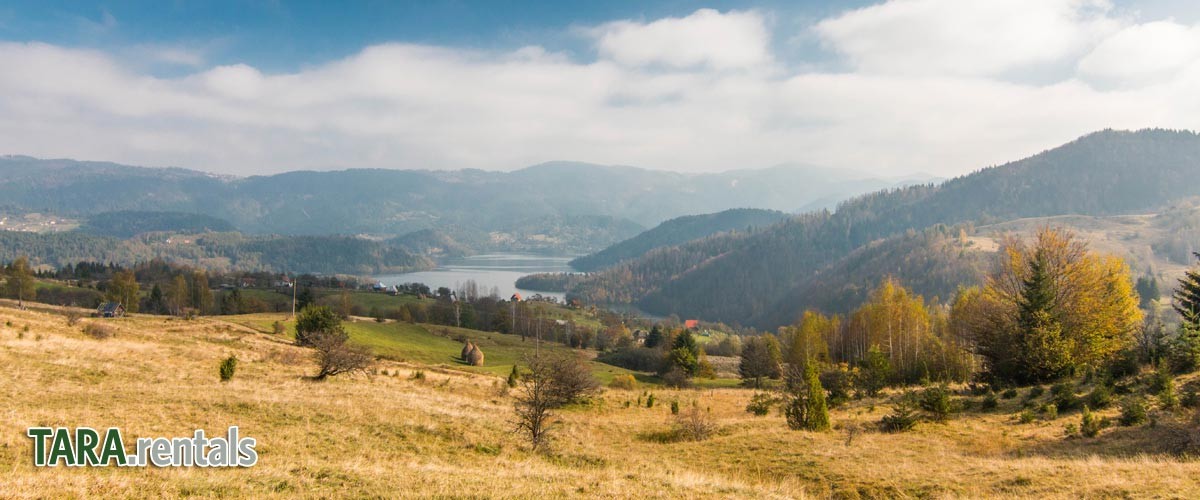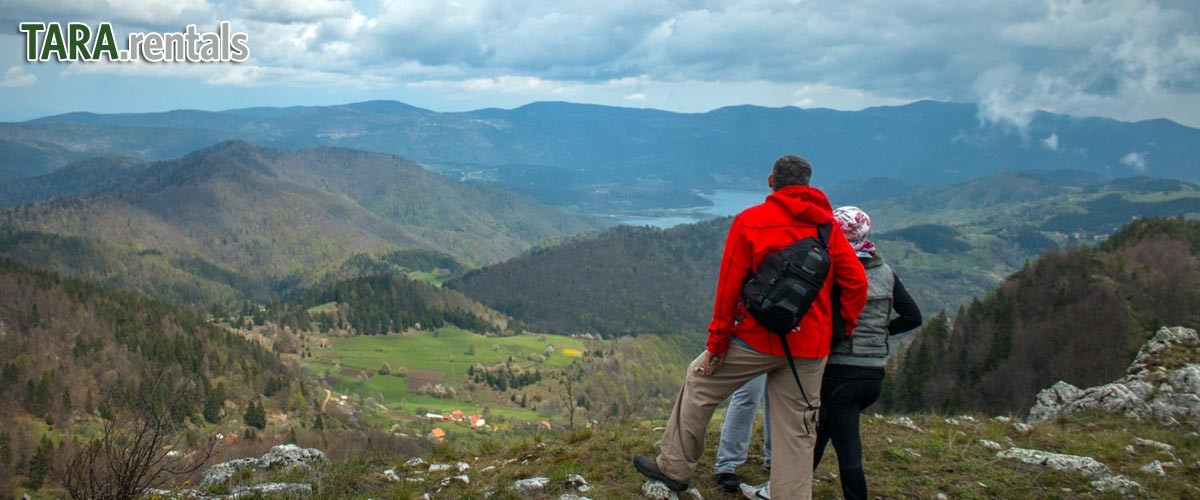Tara is located in western Serbia. It is a part of Dinaric Alps and covers an area of 183 km2. Its length is 50 km, and it is 22 km wide, with average height of 1200 m above sea level. Its highest point is Kozji rid – 1591 m.
The location of Tara allows development of tourism and visits to variety of different tourist locations. Richness and variety of tourist attractions, preserved natural environment, mountain relief with height between800-1500 m, winter sports facilities, richness and variety of plant and animal life, pleasant climate, river Drina and artificial lakes Perućac and Zaovine make this mountain one of the most beautiful in our country. Tara is situated in the vicinity of places such are town of Uzice, Mokra Gora, town of Višegrad with numerous cultural and historical sights which can be easily visited by people who are staying on Tara. This gives them opportunity for more interesting vacations. Tara gives excellent opportunities for development of sustainable tourism with minimal impact on its environment and cultural heritage, which helps economical development of local community at the same time.
Tara is a good place for building tourist objects. There are lots of places with great amount of sunshine and little wind. During winter you can engage in beginner or Nordic skiing or sleighing. Opportunities for alpine skiing are limited due to shortness of chutes, which is less than 2 km.
The best chutes are in the region of Predov krst. They are between 3 and 5 km long. Mild steeps of Tara are good for walking, horse riding, using trim traces and other sport activities.
On July the 13. 1981. Tara becomes a National park covering area of 19.175 ha.
Due to its climate and isolation Tara preserved ancient species of trees such as pancic spruce and other almost fossil species of plants. Tara is mostly made of limestone and its average height is 1000-1200m. The highest point is Kozji Rid -1591m and the lowest 291m is at the lake Perućac. Vrelo River is the strongest fountain in the national park, which runs into river Drina after 365 meters. Summers are fresh and winters are cold with lots of snow. Most rainfall is in May. Driest months are July and August. Autumn is sunny and warmer then spring.
NP Tara is 80% covered with forests. There are 34 forest and 19 meadow communities. 75% of forests are mixed spruce-fir, fir and beech. Besides Pančić spruce significant plants are hazel, yew, holly, jeremičak, knapweed of derventa, peony, blechnum spicant
There are 53 species of mammals. The most interesting are bear (Ursus arctos), and chamois (Rupicapra rupicapra) which lives even on elevation of 291m. There are 135 species of birds. 43 of them are migrating species. The most interesting are endangered species such are golden eagle (Aquila chryssetos), peregrine falcon and others.
There are more than 251 species of mushrooms. Three of them are poisonous. Amanita phalloides is the most dangerous mushroom in Europe.
Fishing on rivers and lakes within the NP is a real pleasure. There are about 40 species of fish.(mladica (Hucho – hucho), lipljan (Thumallus thumallus), gull, carp, jez (Leuciscus idus)…
In the NP Tara there are many archeological sights dating from neolith to middle ages. There are stecaks in Perucac, remnants of medieval fortress Solotnik and monastery Rača, built by king Dragutin Nemanjić in the 13. century.
There are 18 mountain foot paths with total length of 120km. When using those paths you should consult maps which can be bought at information points in the park.
TAROCYKL project defined 27 cycling paths with total length of about 420km creating opportunity for a new kind of tourism with no side effects on environment.
Hunting in the NP Tara is always organized according to plans. There are about 40 bears, 300 chamois, 320 does and 40 wild boars. Hunting licenses, guides and transportation are authorized by service for protection and improvement oh hunting and fishing of NP Tara.
You can find more about national park on http://www.nptara.rs/en/


 Srpski
Srpski



